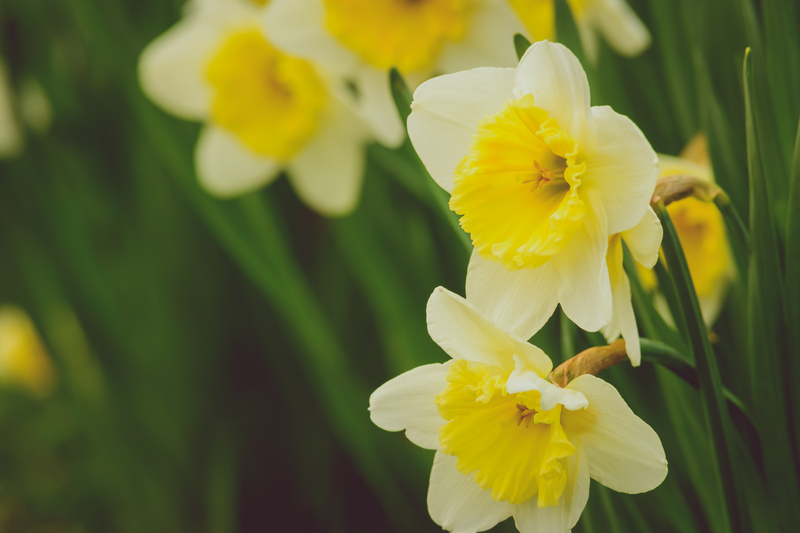Mastering Hedge Trimming Styles with Unique Techniques
Posted on 04/07/2025
Are you ready to take your garden to the next level? Hedge trimming is more than just a maintenance task--it's an art form. By mastering hedge trimming styles and unique techniques, you can transform your outdoor space into a visually stunning masterpiece. From classic shapes to intricate designs, this extensive guide will help you discover the secrets behind perfectly manicured hedges.
Why Hedge Trimming Matters for Your Outdoor Space
A well-maintained hedge does more than mark property boundaries. It enhances curb appeal, provides privacy, and creates a sense of structure. Expert hedge trimming techniques allow you to express your creativity and elevate your home's landscaping. As we explore the world of hedge pruning styles, you'll learn how to choose, shape, and care for your greenery with confidence.
The Fundamentals of Hedge Trimming
Before diving into advanced trimming techniques and styles, let's cover the basics. Hedge trimming involves the use of specialized tools to cut and shape shrubs, creating clean lines and encouraging healthy growth.
- Hand shears: Perfect for precision work and small hedges.
- Electric or gas hedge trimmers: Ideal for medium or large hedges.
- Loppers: Used for cutting thicker branches.
- Pruning saws: Essential for old, woody, or overgrown hedges.
Tip: Always sterilize your tools to prevent the spread of disease between plants.

Types of Hedge Trimming Styles
There's a wide range of hedge shaping techniques to choose from. Each style serves a distinct purpose and aesthetic. Let's break down popular and unique hedge trimming styles:
1. Formal Hedge Trimming
Formal hedges are characterized by their crisp, geometric lines and symmetrical appearance. These landscapes add a touch of elegance and order to your property.
Best plants: Boxwood, privet, yew
- Technique: Use a string line stretched between stakes to maintain even heights and straight edges.
- Benefits: Provides privacy, defines spaces, and creates a refined look.
2. Informal Hedge Trimming
For a more natural appearance, go with informal hedge styles. These shapes allow plants to retain some of their organic growth patterns, with gentle curves and varied heights.
Perfect for: Flowering shrubs, deciduous bushes
- Technique: Prune lightly to remove only dead or wayward branches, allowing the plant to grow organically.
- Benefits: Attracts wildlife and provides a soft, relaxed look.
3. Topiary Hedge Trimming
Topiary is where creativity thrives! This unique technique involves sculpting hedges into animals, spirals, cones, and abstract shapes. It's an advanced method--but one that turns your landscape into living art.
Ideal for: Boxwood, holly, privet
- Technique: Use wire frames as guides. Trim frequently and patiently to achieve sharp details.
- Benefits: Wows visitors and expresses your unique style.
4. Cloud Pruning
Cloud pruning, or Niwaki, is a Japanese technique that shapes shrubs into rounded, cloud-like forms. This style is subtle, creative, and adds a distinctively sophisticated feel to gardens.
Prime plants: Japanese holly, boxwood, pine
- Technique: Trim growth into undulating domes, keeping each "cloud" distinct but harmonious.
- Benefits: Supports the tranquil, contemplative nature of Japanese-inspired gardens.
5. Living Fences and Privacy Screens
Hedge trimming for privacy focuses on dense, tall plantings. Regular shaping is essential for a lush, uniform barrier.
Great choices: Leyland cypress, arborvitae, laurel
- Technique: Trim tops and sides regularly. Slightly taper the hedge (wider at the base) to ensure sunlight reaches all parts of the plant.
- Benefits: Boosts privacy and shields your property from wind and noise.
Unique Hedge Trimming Techniques from the Experts
To master hedge trimming styles, you must embrace innovative techniques. These methods save time, promote plant health, and create stunning results.
1. The Taper Cutting Method
When trimming tall hedges, always make the base wider than the top. This taper cut allows sunlight to reach lower branches, resulting in denser, healthier growth throughout the hedge.
- Tip: Hold the trimmer at a slight angle to ensure an even, tapered cut.
- Result: A hedge that thrives from bottom to top.
2. Double Cut for Density
For show-quality results, professionals recommend a double cut--first, a rough cut in one direction, then a finishing pass in the opposite direction. This technique gives your hedge a fuller, more polished appearance.
- Advisory: Allow a few days between cuts to help the plant recover.
3. Shaping Frames and Templates
Maintaining complex topiary styles can be challenging. The use of wire frames, plywood templates, or even cardboard guides helps both novices and pros achieve symmetrical and elaborate designs.
- How to use: Place the frame over or against the hedge, using it as a trimming guide for clean results.
4. Seasonal & Selective Trimming
The timing of your trim is as important as the style. Most hedges respond well to a spring trim, but species such as evergreens and flowering shrubs have unique needs.
- Spring: Best for most hedges, as it encourages vigorous new growth.
- Summer: Use for maintenance, reshaping, and minor corrections.
- After flowering: Prune flowering shrubs post-bloom to promote next year's blooms.
Choosing the Right Hedge Trimming Tools
Your choice of equipment can make or break your hedge shaping technique. Invest in the best tools you can afford and maintain them well for clean, healthy cuts.
- Electric hedge trimmers: Great for large, formal hedges.
- Cordless trimmers: Offer flexibility and safety for detailed work.
- Manual shears: Provide control for artistic and intricate shaping.
- Telescopic handles: Give you access to tall hedges without ladders.
Remember: Sharp blades leave cleaner cuts, reducing stress on plants and preventing disease.
Common Hedge Trimming Mistakes and How to Avoid Them
If you want to master hedge trimming, it's essential to avoid these common pitfalls:
- Trimming at the wrong time: Can damage flower buds or slow growth.
- Cutting too much at once: Weakens the hedge and opens it up to disease.
- Incorrect shapes: A narrow base causes lower branches to die back due to lack of sunlight.
- Dull tools: Cause ragged cuts and plant stress.
- Ignoring safety: Always wear gloves, safety glasses, and long sleeves when trimming.
Personalizing Your Hedge Trimming Style
Introduce your own flair to your outdoor space by blending different hedge cutting styles or inventing new ones. Consider these ideas:
- Mixed heights and shapes: Combine formal lines with informal curves for a dynamic look.
- Integrate flowering varieties: Use species that bloom for seasonal interest and pollinator attraction.
- Use color: Incorporate hedges with golden or variegated foliage for contrast.
- Create focal points: Add a topiary centerpiece at the end of a row or in a prominent spot.
Inspiration from Around the World
Some of the world's most iconic gardens employ distinctive hedge trimming techniques:
- French parterres: Known for intricate, symmetrical boxwood designs.
- English cottage gardens: Feature informal, flowering hedges with soft, meandering lines.
- Japanese Zen gardens: Champion cloud pruning and minimalism.
Seasonal Maintenance for a Perfect Hedge
Your beautiful new hedge design needs regular care to look its best. Follow these hedge maintenance tips:
- Feed and water regularly: Especially during the growing season.
- Mulch: Keeps roots cool and moist.
- Inspect for pests and disease: Catch problems early.
- Shape little and often: Frequent light trims prevent heavy, stressful cuts.

Frequently Asked Questions about Hedge Trimming Styles & Techniques
Q: How often should I trim my hedges?
A: Most formal hedges require two to three trims per growing season. Informal and flowering hedges need only one or two trims, depending on species.
Q: What's the best time of year for hedge cutting?
A: Trim evergreens in late spring. Deciduous hedges are best trimmed when dormant in late winter.
Q: How do I know when to stop trimming?
A: When you notice healthy leaf buds and no visible gaps or holes, you've achieved the right density.
Conclusion: Master the Art of Hedge Trimming
By mastering hedge trimming styles and unique techniques, your garden can become the envy of the neighborhood. Start with the basics, experiment with advanced methods, and don't be afraid to express your personality through creative shapes. Remember, patience and consistency are key to a flawless finish. With these tips, your hedges will not only thrive--but also delight and inspire all year round.
Ready to Try New Hedge Trimming Styles?
Grab your shears and get creative--your perfect hedge awaits! Share your hedge designs and tag us for a chance to be featured among the best-trimmed gardens online.



